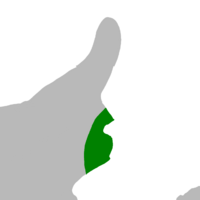Standoff at Tensee River
On January 11th, 2035, mere months after the 2034 Austro-Caldera Prime Leader election which reformed the Calderan government, and the 2034 Urceo-Canespan diplomatic standoff, the Volin Preservatory Guard and the Provisional Government of the Republic of Canespa began an invasion of the Calderan province of Bavogia, holding roughly half of the province before the Calderan Armed Forces and the Canespan Military were dispatched. This event marked the beginning of cooperation between the Volin militia and PGRC, and also illustrated internationally the threat of both of these terrorist groups working together. Since the event, the Canespan government has officially declared the Volin militia a terrorist group, however, Calderan investigators suggest that Canespa is still host to a variety of Volin militia bases, and has not made serious effort to expel them, similar to the Bavogian Provincial Government. Similarly, Caldera has officially declared the PGRC a terrorist group, but independent investigators have found evidence of Calderan police not fully expelling PGRC remnants if said remnants are acting alone.
| Standoff at Tensee River | |||||||
|---|---|---|---|---|---|---|---|
 Volin militia occupied portion of Bavogia | |||||||
| |||||||
| Belligerents | |||||||
|
|
| ||||||
| Commanders and leaders | |||||||
|
|
| ||||||
| Units involved | |||||||
|
|
| ||||||
| Casualties and losses | |||||||
|
|
| ||||||
Standoff
When soldiers arrived to Bavogia to find much of it under hostile control, the Volin militia retreated behind Tensee river, which divided the province roughly in half. Trying to cross or go around this river proved deadly for the Calderan Armed Forces (CAF) who suffered 6 casualties after a helicopter was destroyed trying to fly over the river. This was discovered to be due to the PGRC's vast arsenal, which had been supplied by Urcea prior to 2035.
It was stated by Volin milita leader John Clarke that the purpose of the invasion was to once and for all declare an independent Bavogia, and to give the Volin people their own nation. Although unknown, it's assumed by Calderan military strategists that the PGRC's involvement was meant to give the organization a staging ground for a potential invasion of Canespa.
Unable to take ground, Caldera established a strong border with snipers positioned along the river, and soon it became devastating for either side to come close to the river.
Attempting to secure more men, John Clarke tried to contact the Bavogian Provincial Guard, which promptly declined involvement, and further was ordered not to interfere with CAF operations due to the deadliness of the situation.
After 4 days of neither side making progress, the Canespan Military ordered a warship to begin launching artillery at the hostile forces, which made way for a Calderan invasion from land, and the CAF were able to completely drive out the hostiles, forcing them to flee to an unknown destination, though Canespan intelligence suggests they fled to somewhere in southern Caracua.
History
Leading up to the standoff, the Volin militia were allowed to expand after the 2034 Austro-Calderan Prime Leader elections, when the new Prime Leader, Charles LeMieux, believed that the Volin militia would stand down and stop being hostile with a third party in power. However, while reforming the government, LeMieux took a somewhat Levantine stance, adopting Burgoignesc as an official language and even replacing the Calderan national flag with one with Burgoignesc elements. The Volin militia took these actions as solely anti-Volin, and thus began preparing for a major operation without interference.

The standoff would not have been so harsh if the Volin militia was constricted to old SG56 rifles as they have been in the past, however, the Volin militia were supported by the PGRC, which prior to July 2034, was recognized by Urcea to be the legitimate government of Canespa, and Urcea traded high quality weapons to the PGRC, even surpassing ones used by the CAF.
After the end of the Urceo-Canespan diplomatic standoff, the PGRC was no longer able to maintain its position in foreign countries, and thus turned to semi-local terrorist cells like the Volin militia for support. In return, the PGRC supported the Volin militia's invasion of Bavogia, which was ultimately a deadly and fruitless crusade.
Result
The result of the standoff was a clear Calderan victory, as Caldera assumed control of all occupied parts of Bavogia, and the PGRC was formally ousted as an international terrorist group, with intentions of destroying local infrastructure and governments to pave the way for their goal of a Republic of Canespa. Visiting the victims family's, President LeMieux saw the destruction firsthand of the standoff, but did not publicly denounce the PGRC, instead, blaming the entire incursion on the Volin militia, and pleading to the Bavogian government that the militia must be stopped.